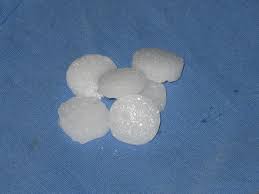Dogs may almost eat anything and that includes mothballs. Poisoning may not only occur from eating the mothballs. Inhaling, contact with the skin or even licking the mothball can also be toxic. Being exposed for a long period of time to the fumes created by mothballs can also be harmful to not only your dog but you as well.

In general, I would not recommend using mothballs in your home if you have pets.
Mothballs particularly those containing an ingredient known as naphthalene can be toxic to dogs. Naphthalene has been recently in some cases replaced by paradichlorobenzene, a product that is less toxic than naphthalene. However, it is still able to potentially cause gastrointestinal upset and neurological symptoms, especially dogs exposed to large amounts.
Symptoms of Mothball Poisoning in Dogs
The amount of toxicity that your dog will experience will depend until the amount of the ingredients consumed. Obviously, a smaller dog will be affected more than a larger dog that has consumed the same amount. If your dog already has an underlying or ongoing problem with their kidney or liver this can cause serious complications
Dogs may experience discomfort such as.
Nausea
Vomiting
Shaking
Irritation of the eyes and nose from vapors
Burning sensation on the skin from dermal exposure
Your dog may exhibit the following signs of poison.
Nausea
Vomiting
Loss of appetite
Lethargy
Tremors
Seizures
Irritation of eyes and nose from vapors
Burning sensation on the skin from dermal exposure
Severe cases will see anemia and possible vomiting of blood Dogs with extensive poisoning may have brown mucous membranes.
If there is a suspicion that your dog has eaten, inhaled or licked mothballs, contact your vet as soon as possible. You may smell a slight odor of mothballs on your dog which is a sign of the poisoning. If you have the package take it with you to the vet so they can determine the active ingredient.
Do not induce vomiting unless you have been instructed to do so by your vet.
Related Posts